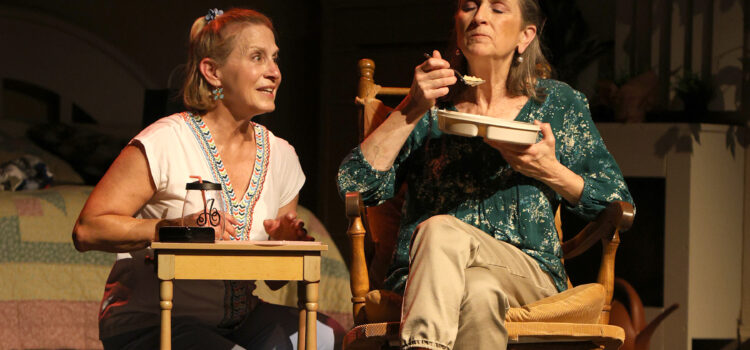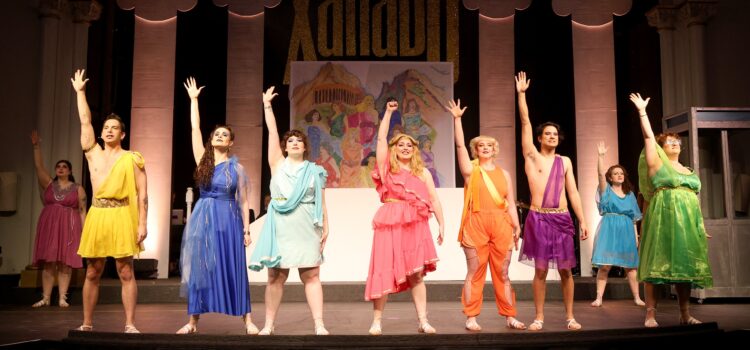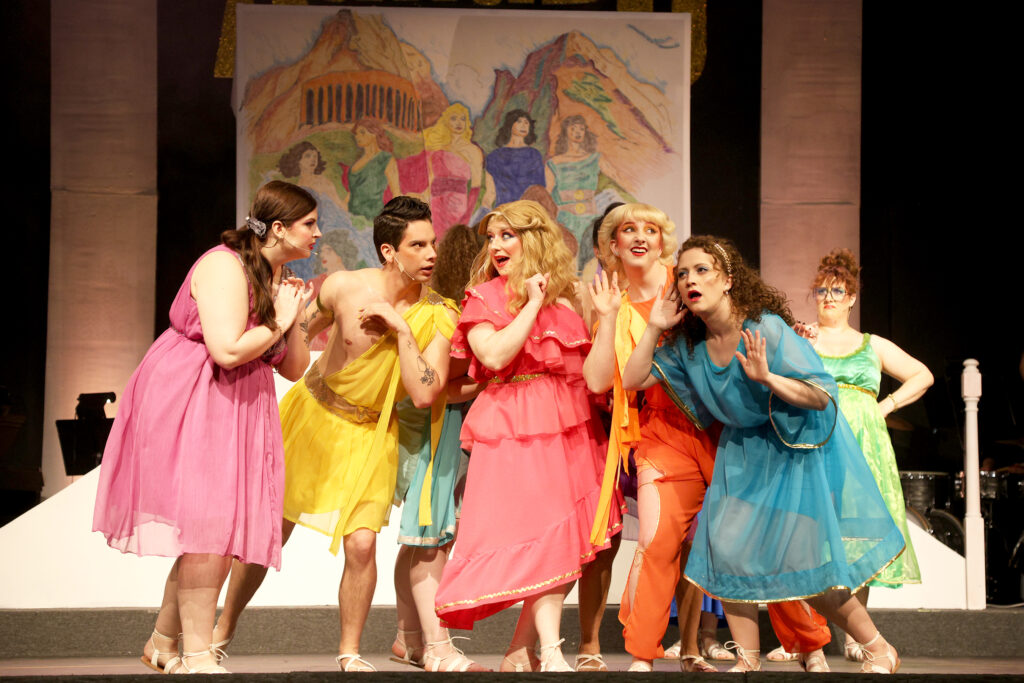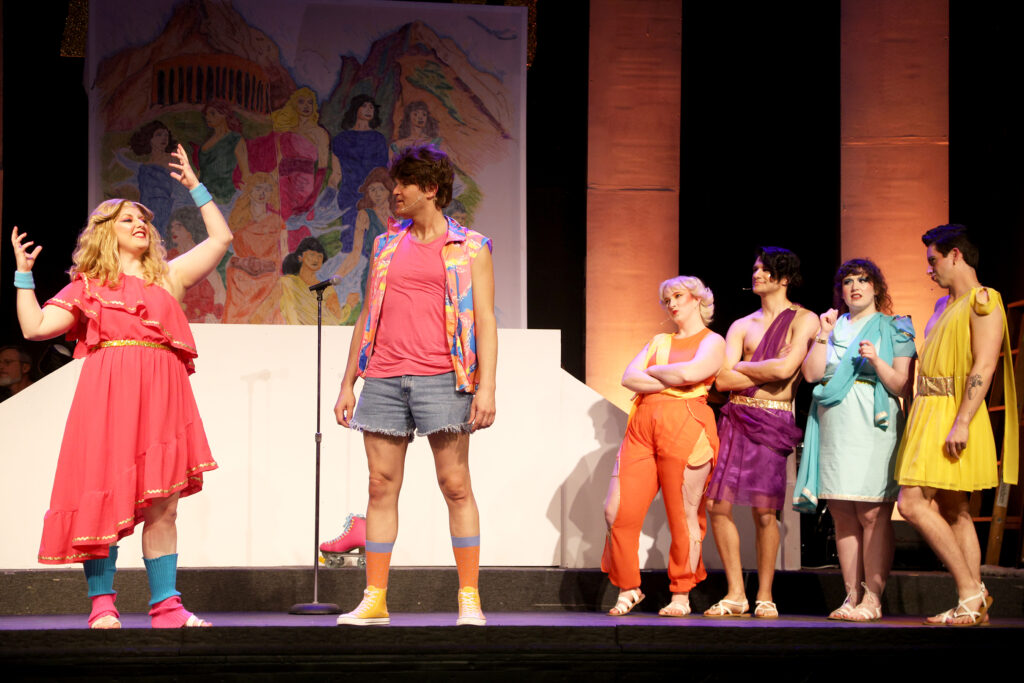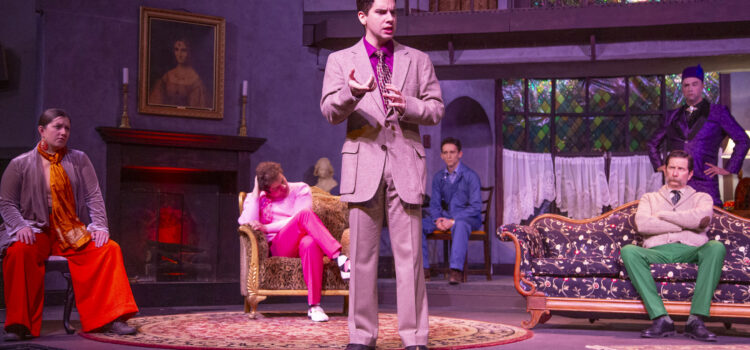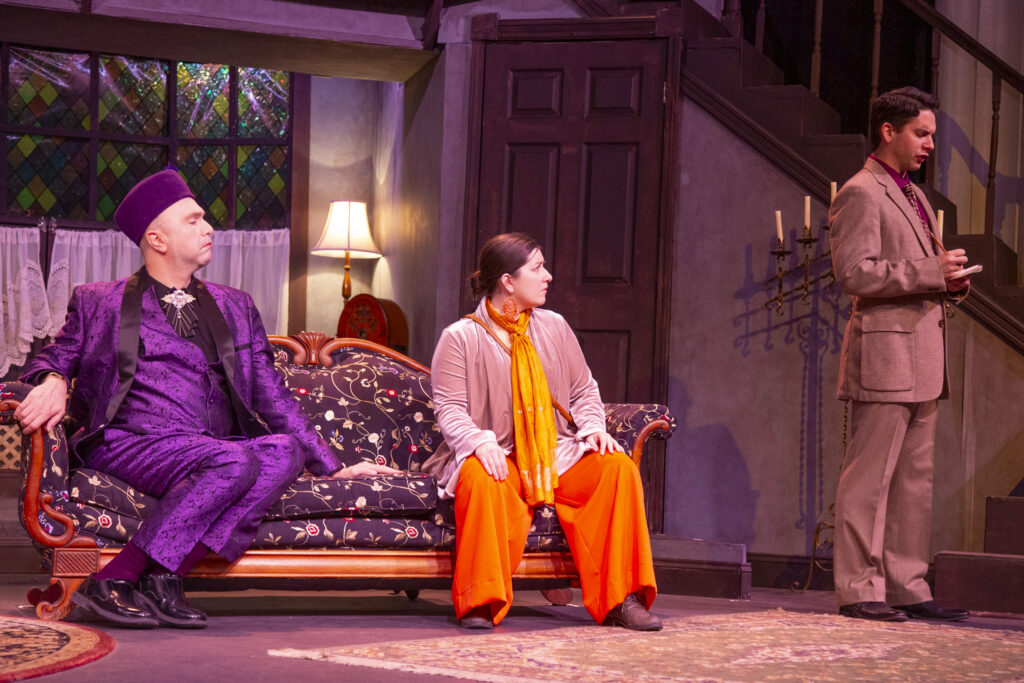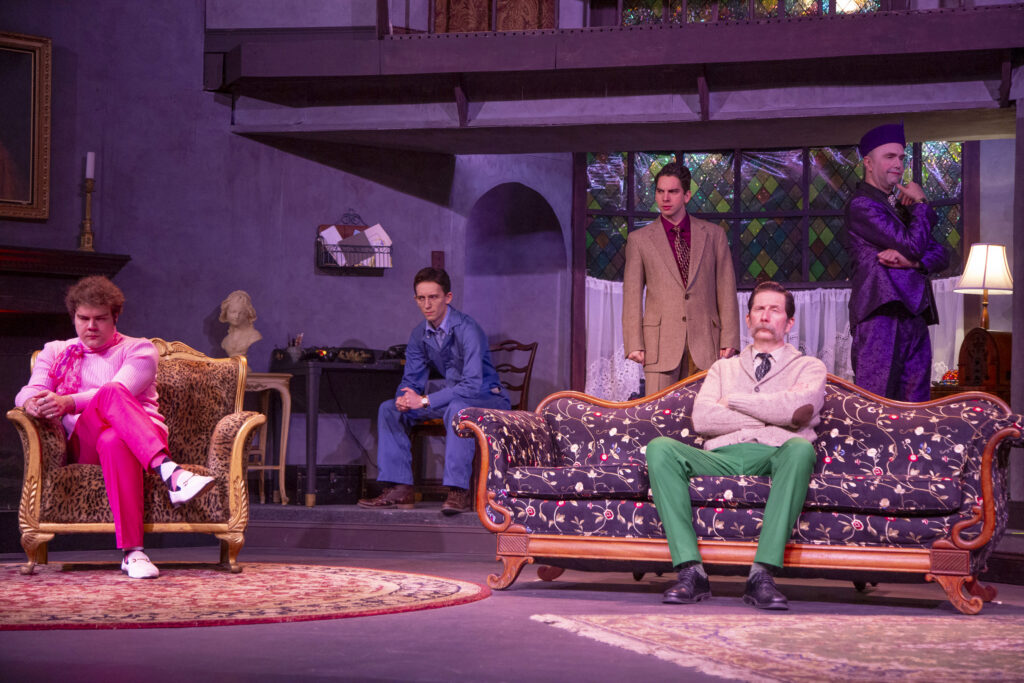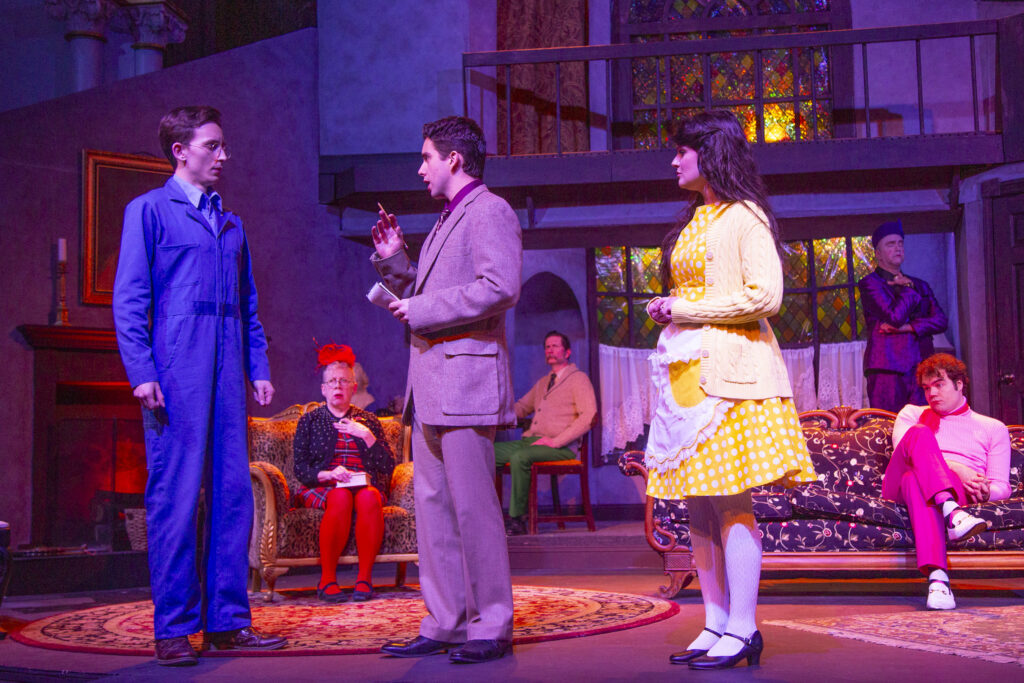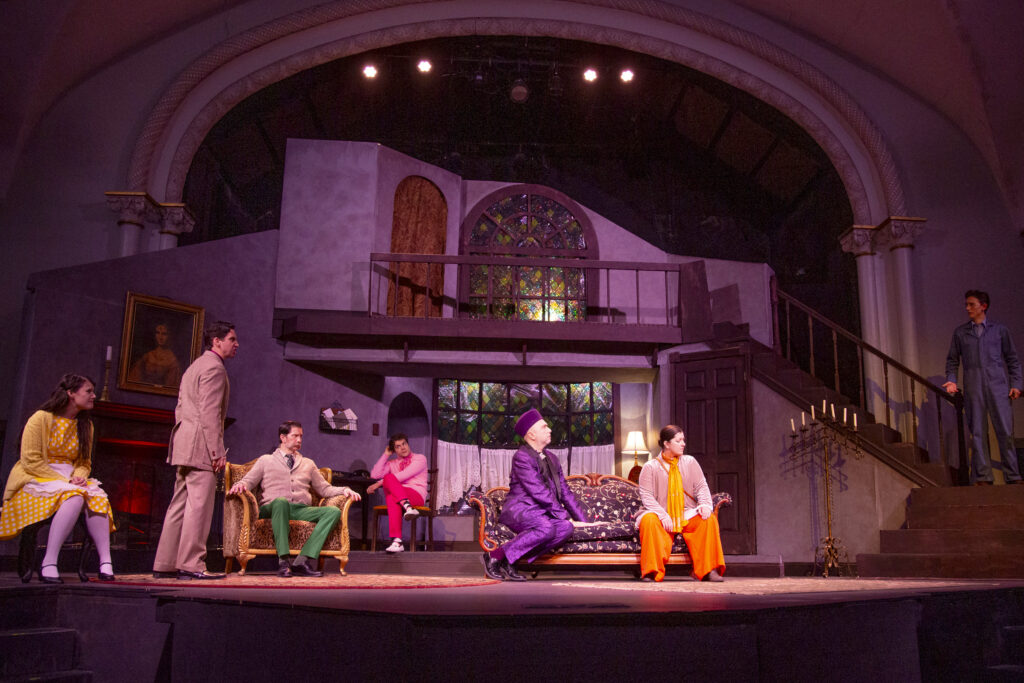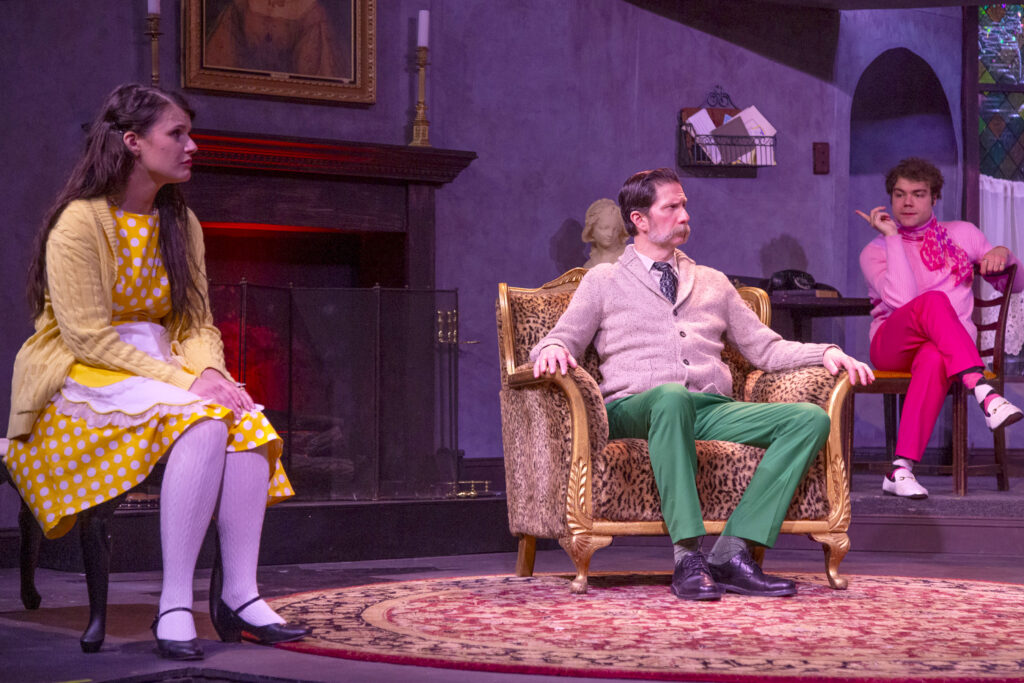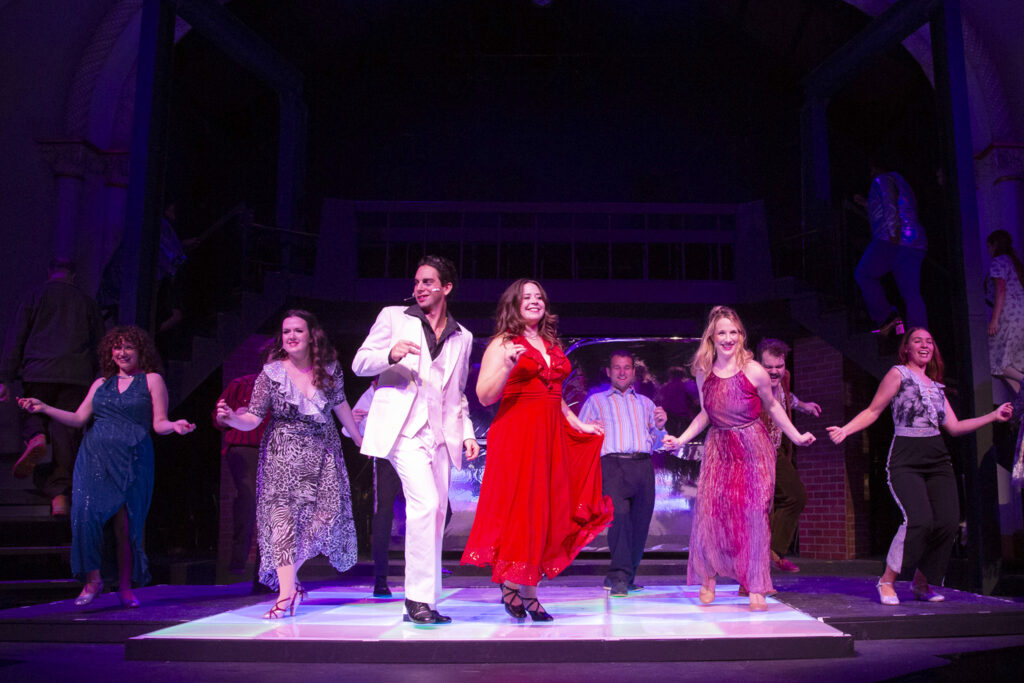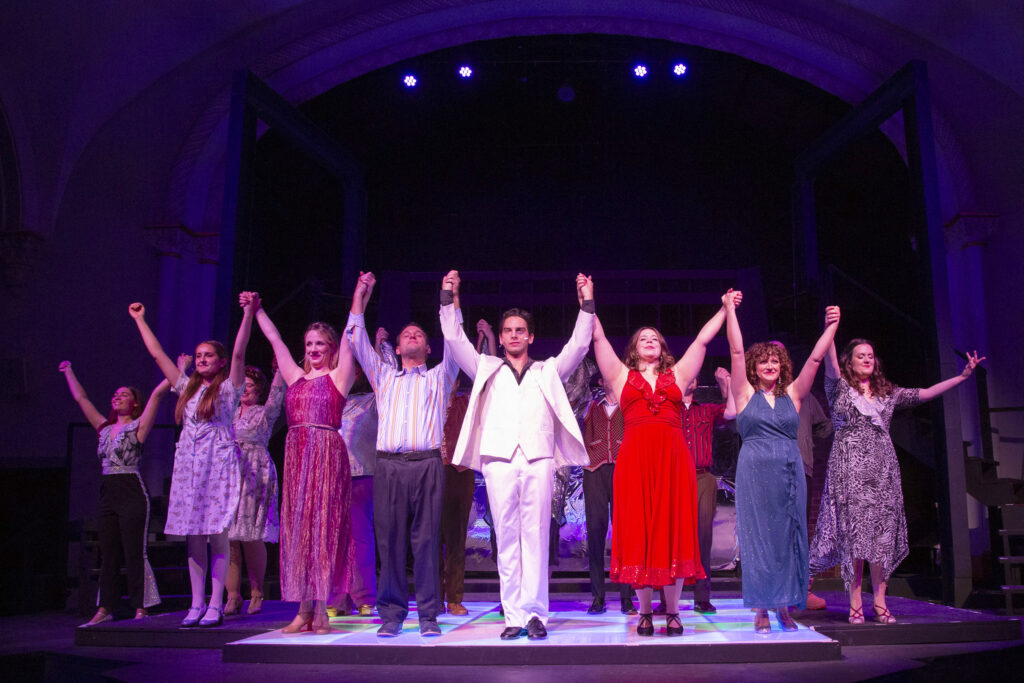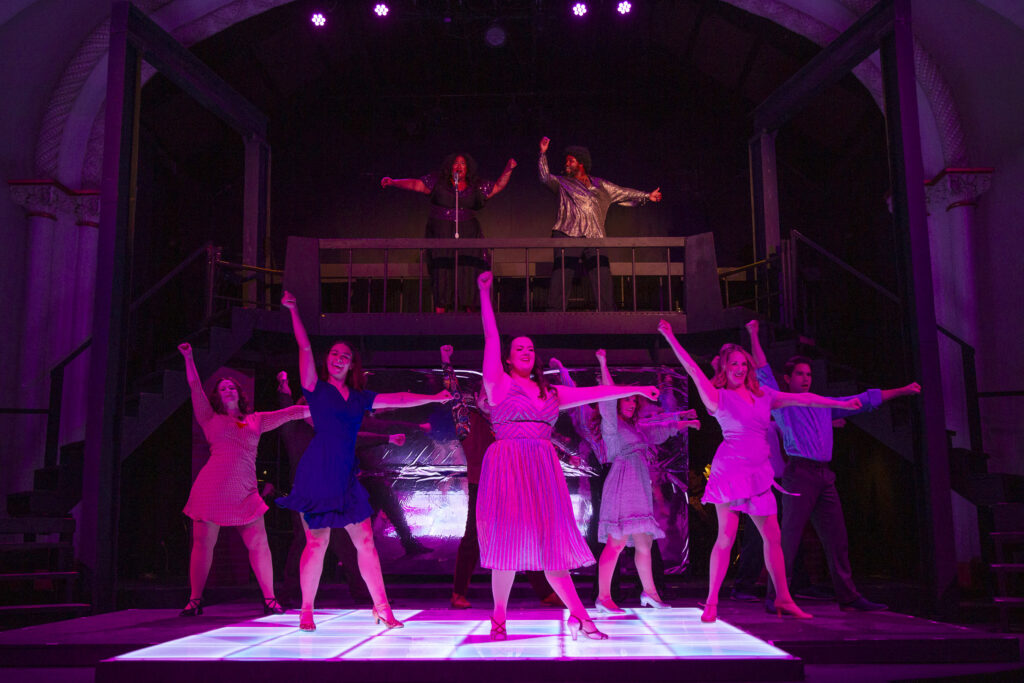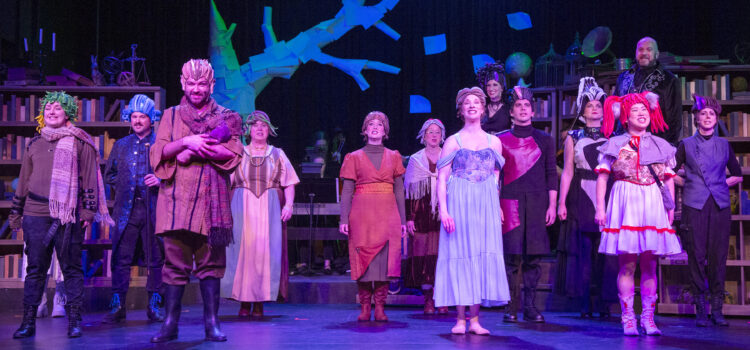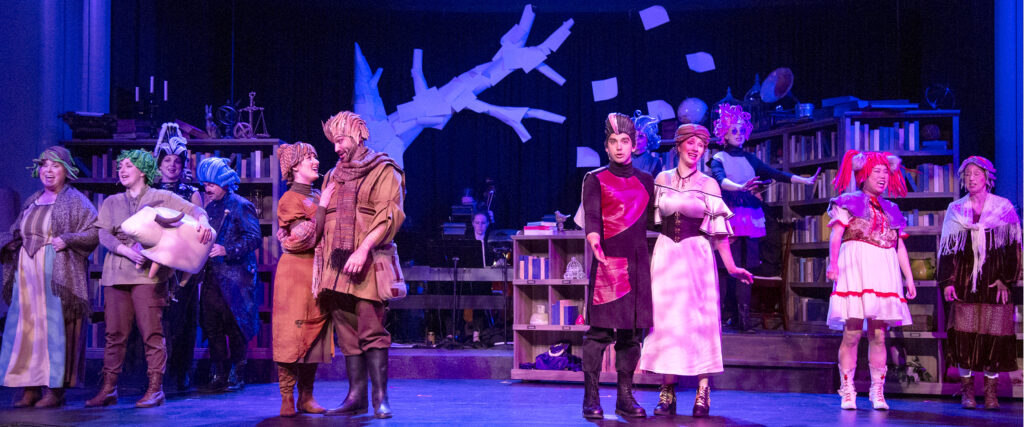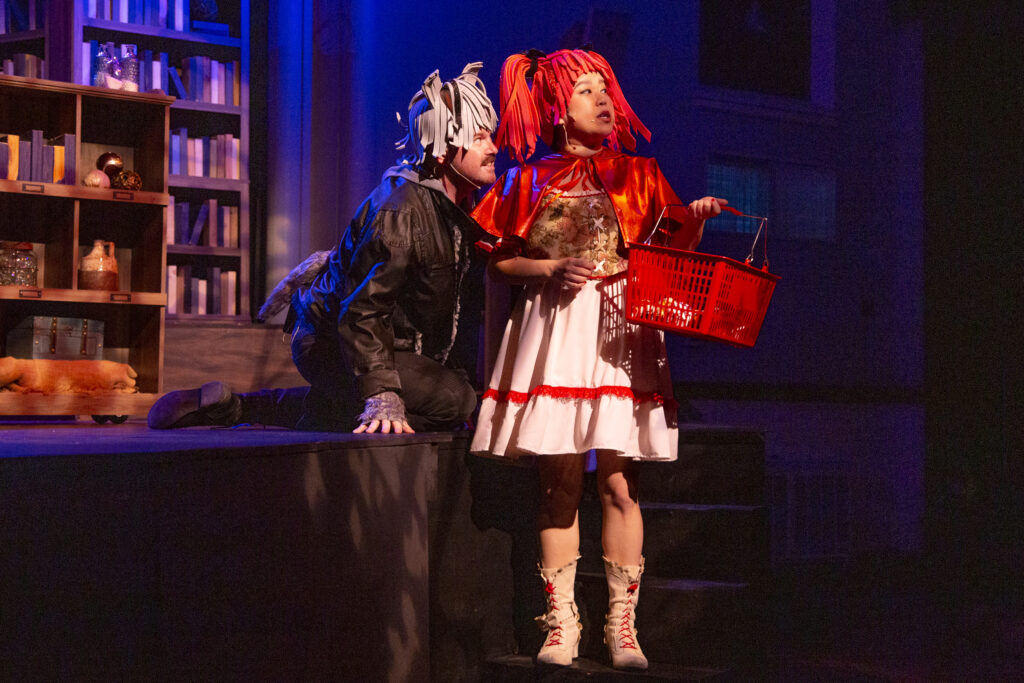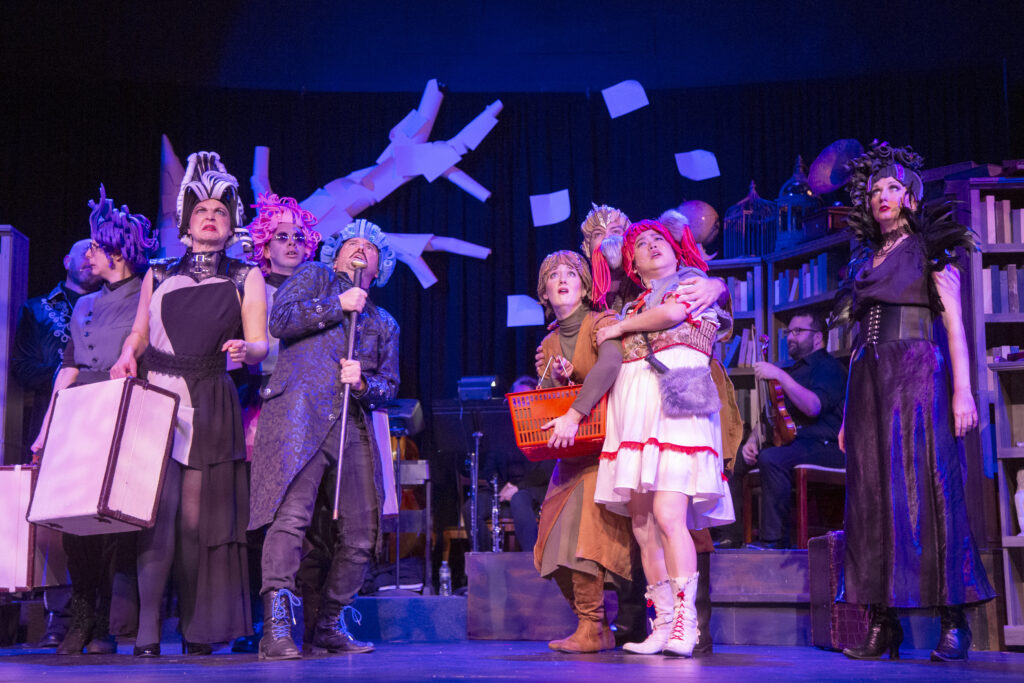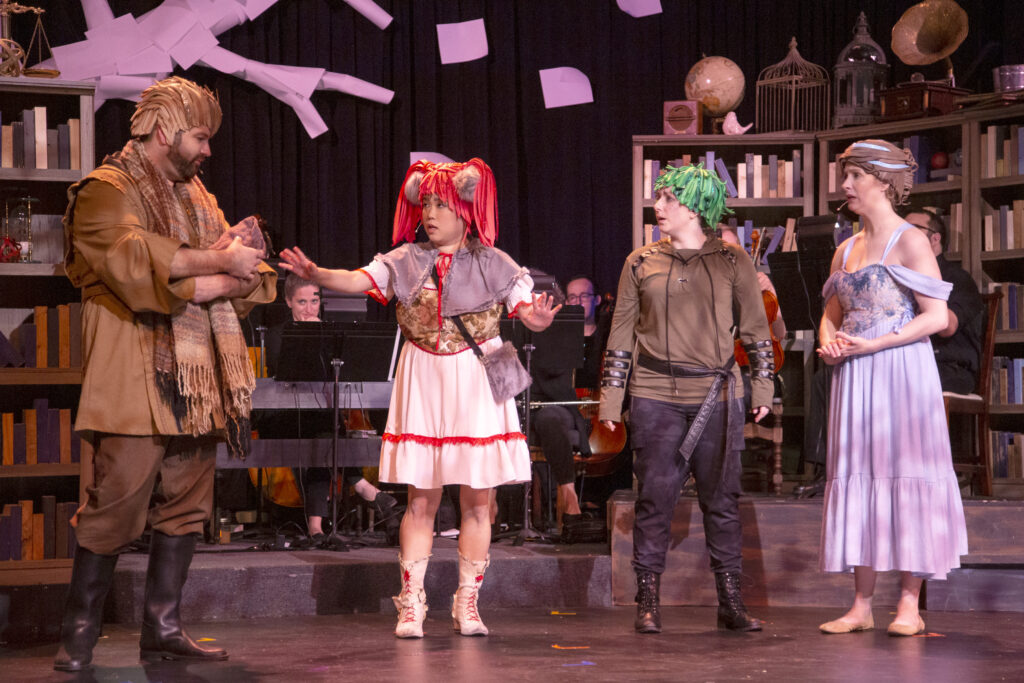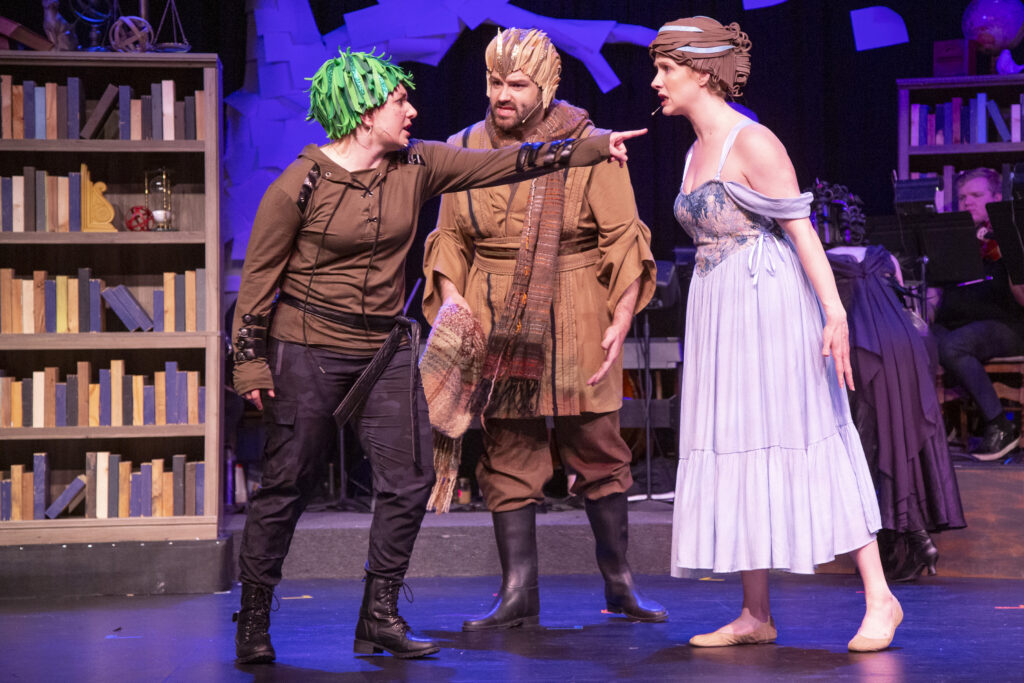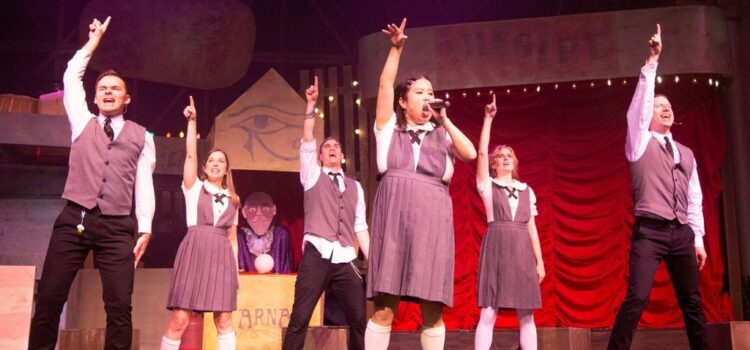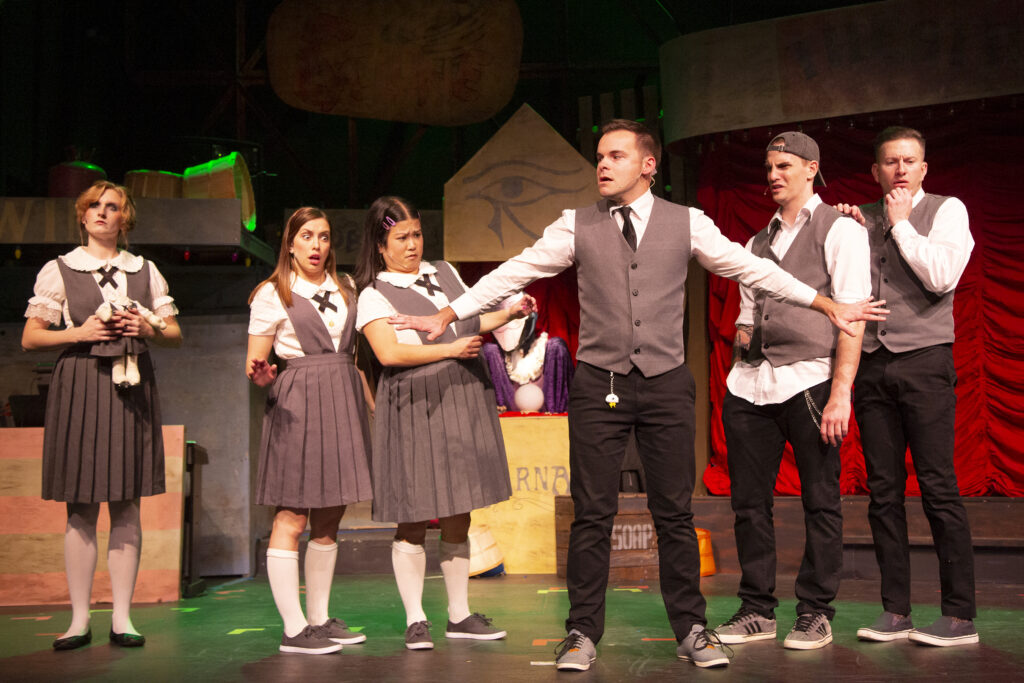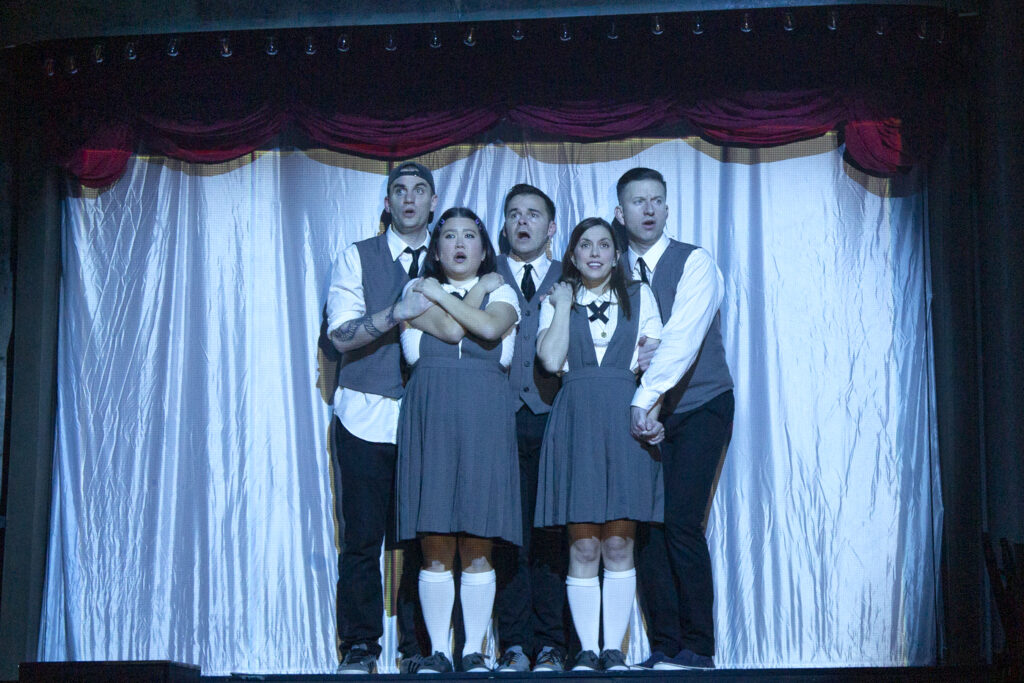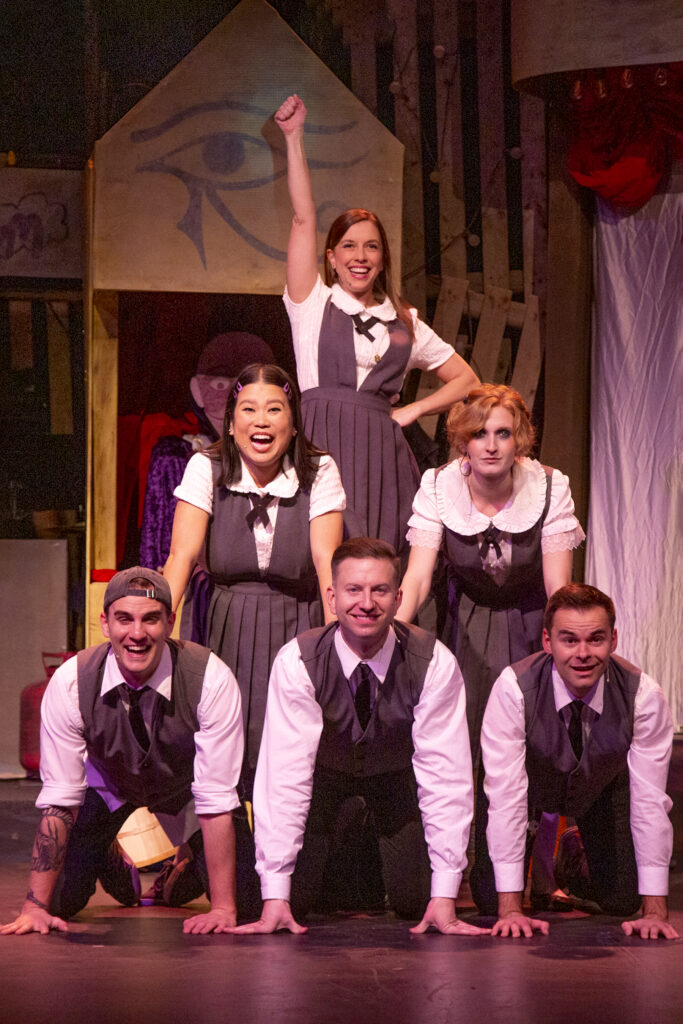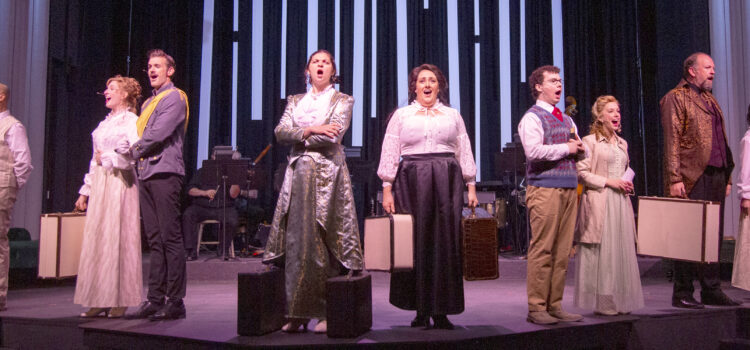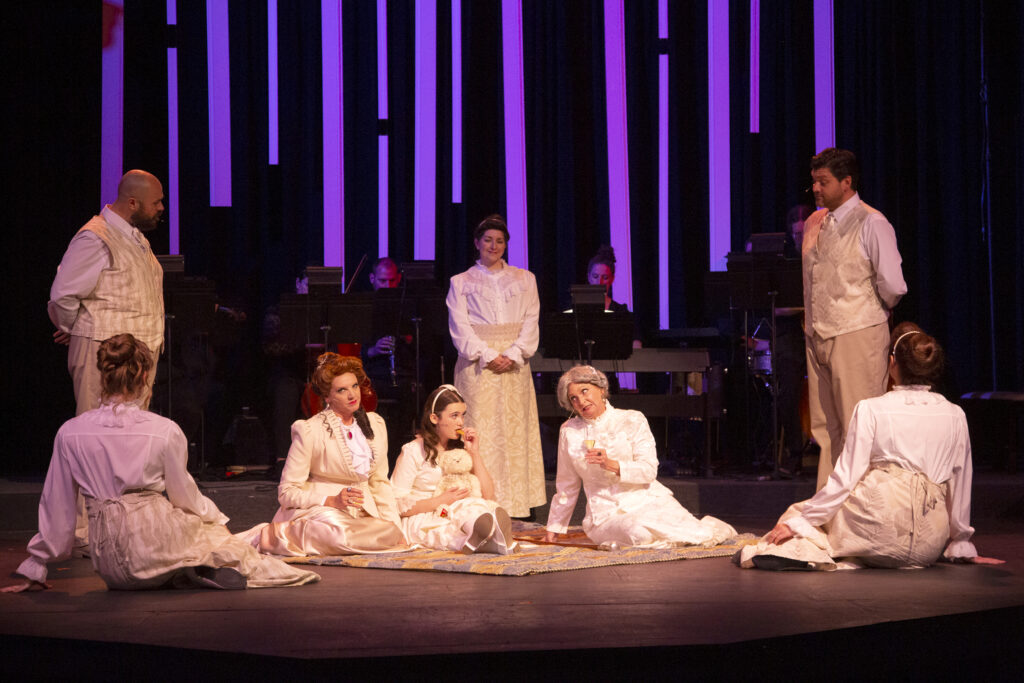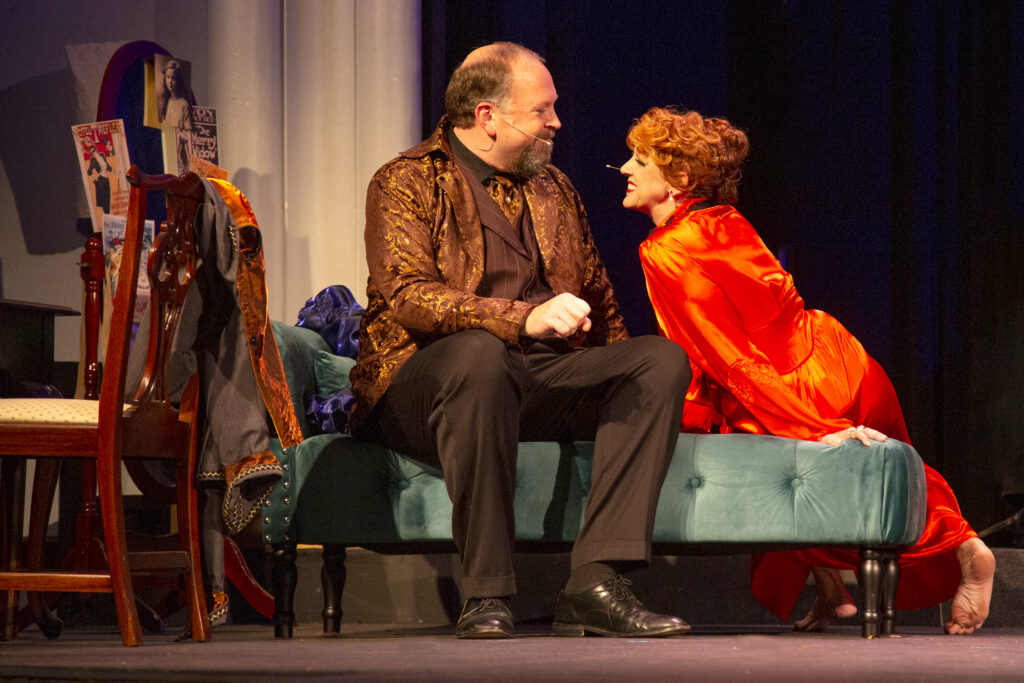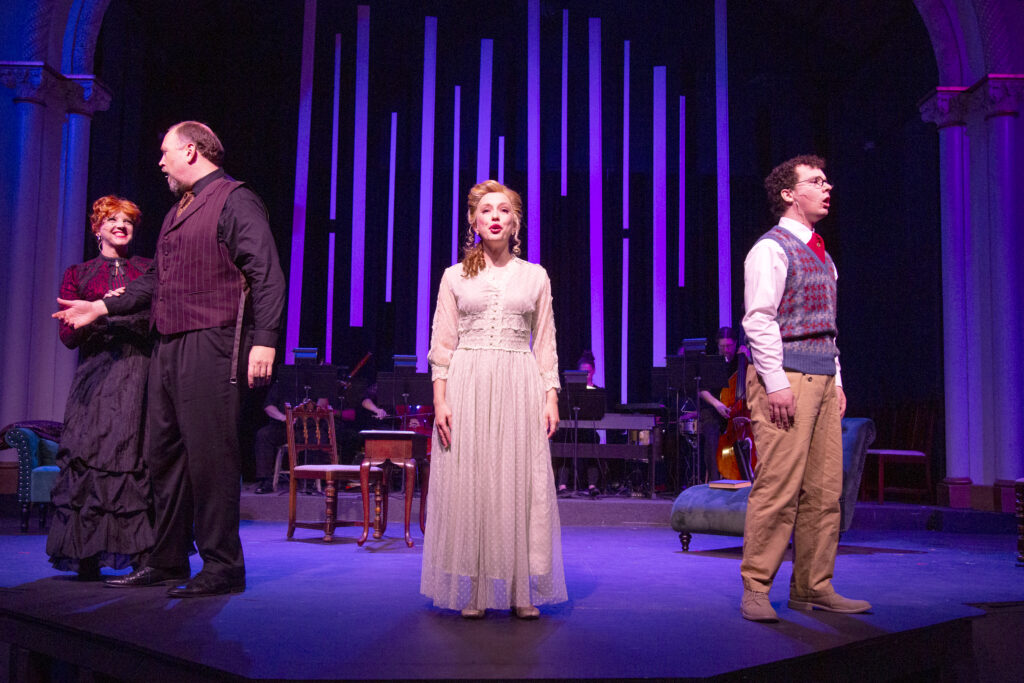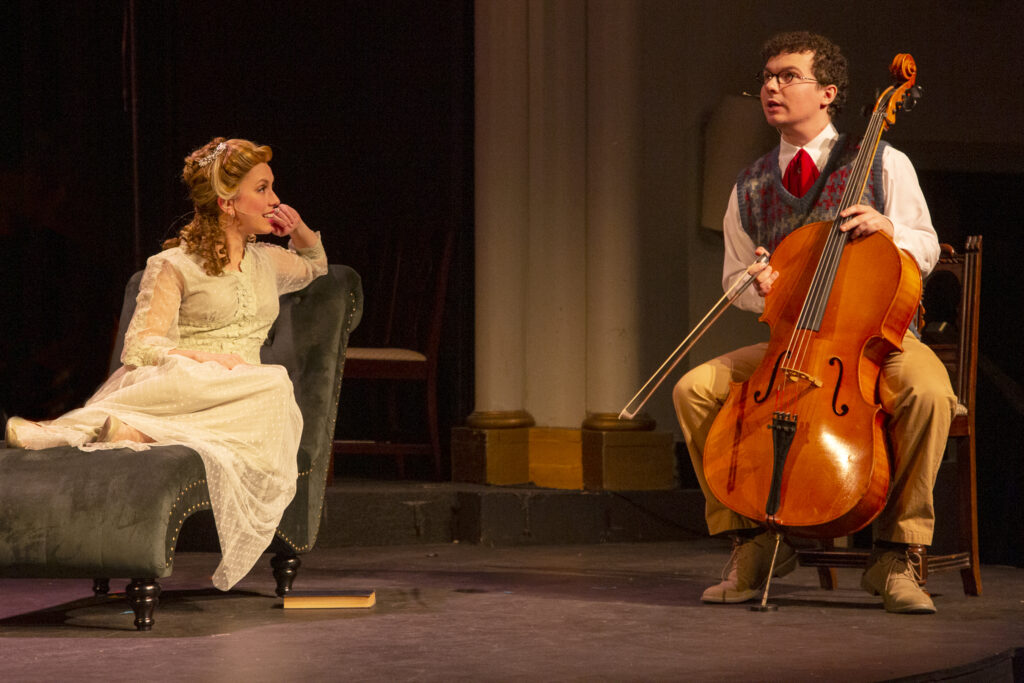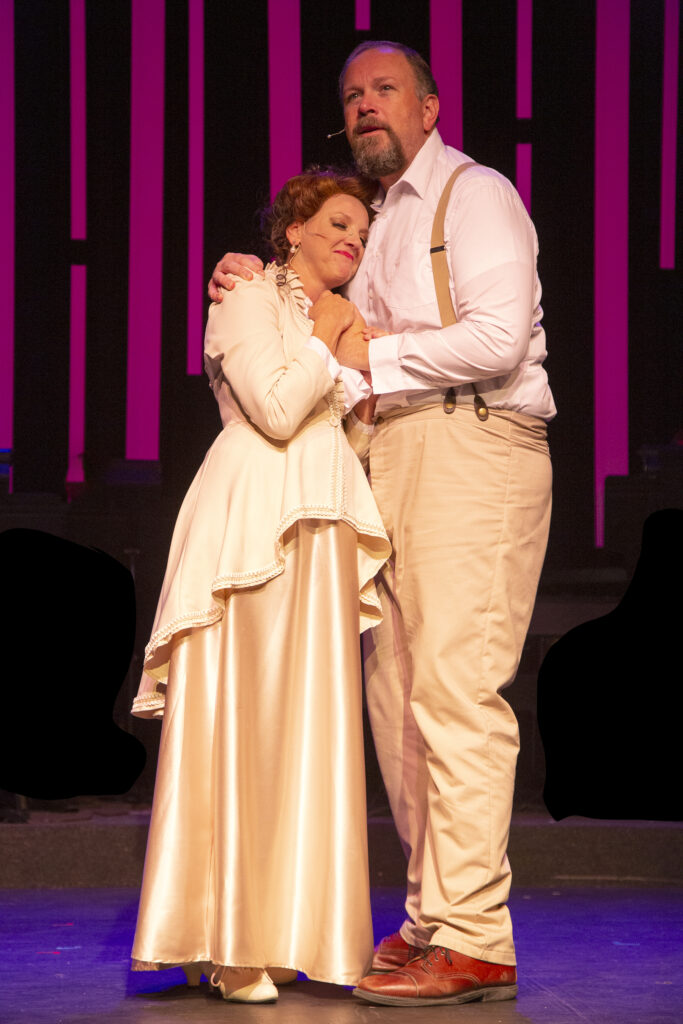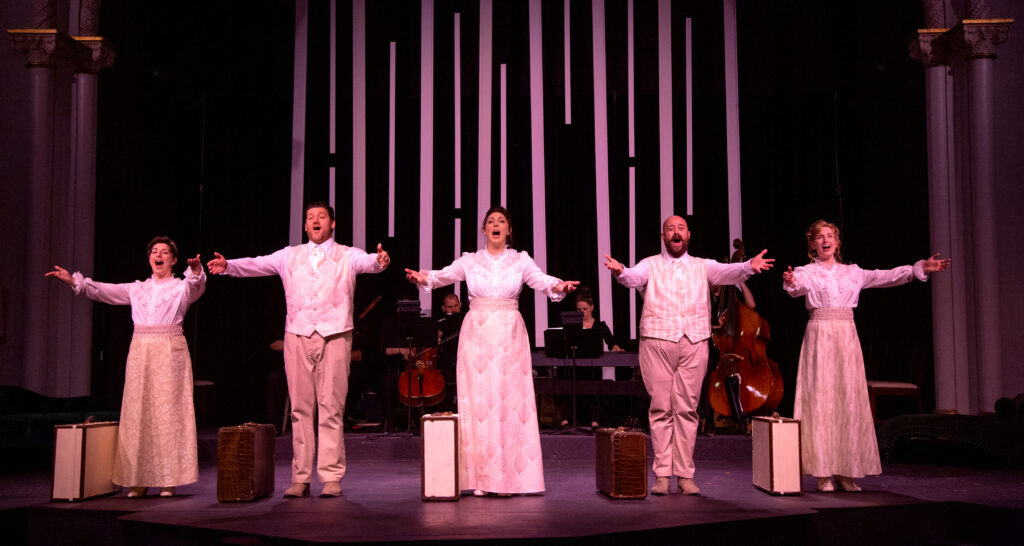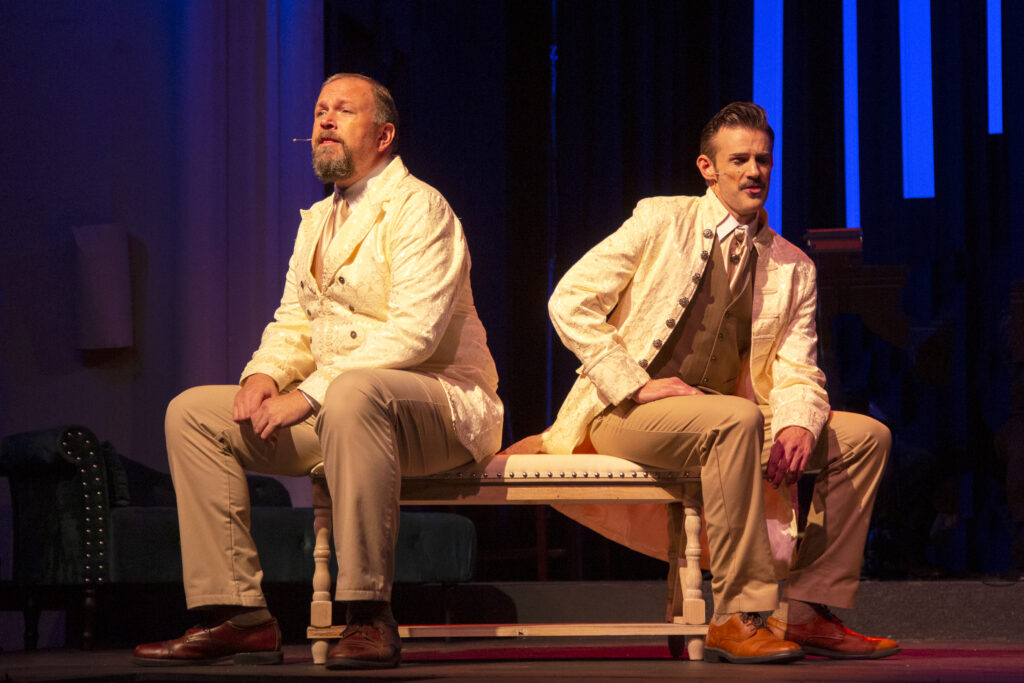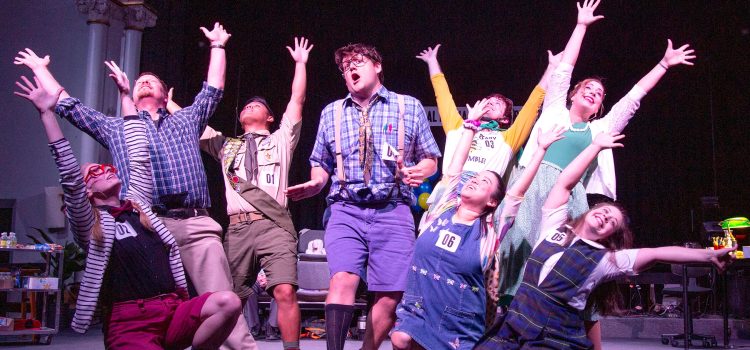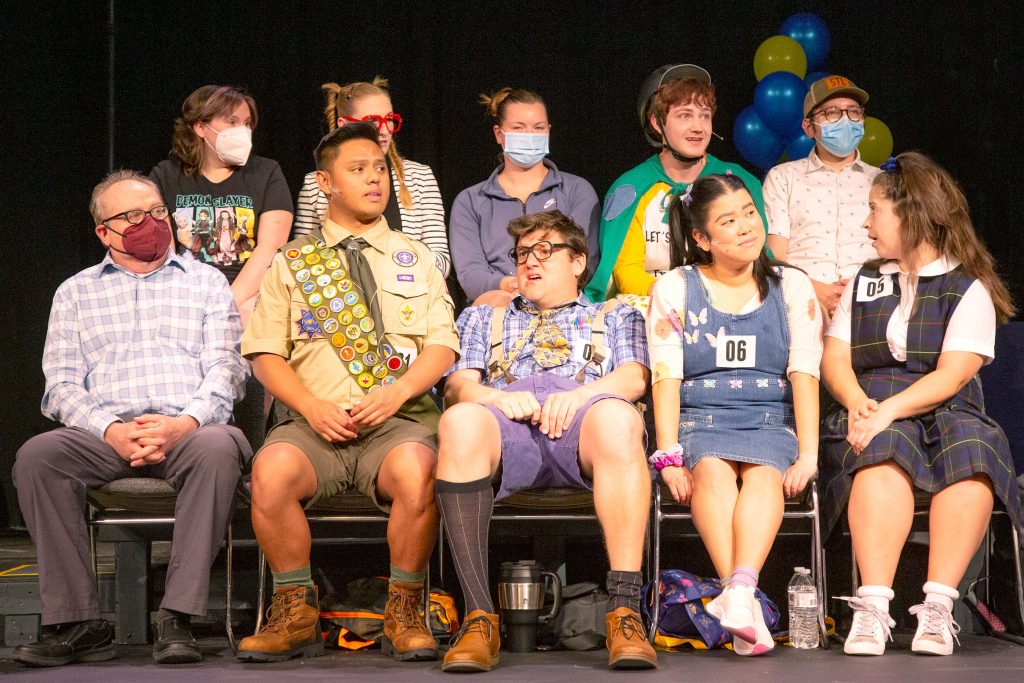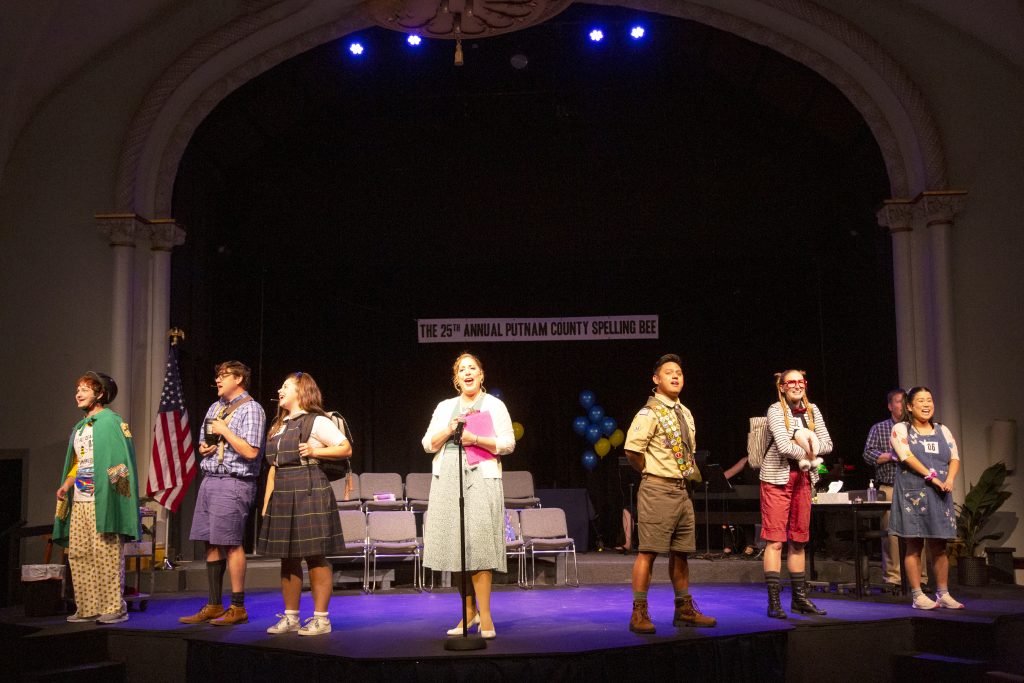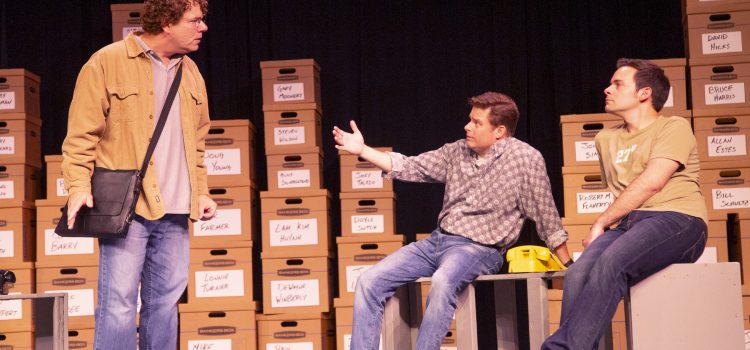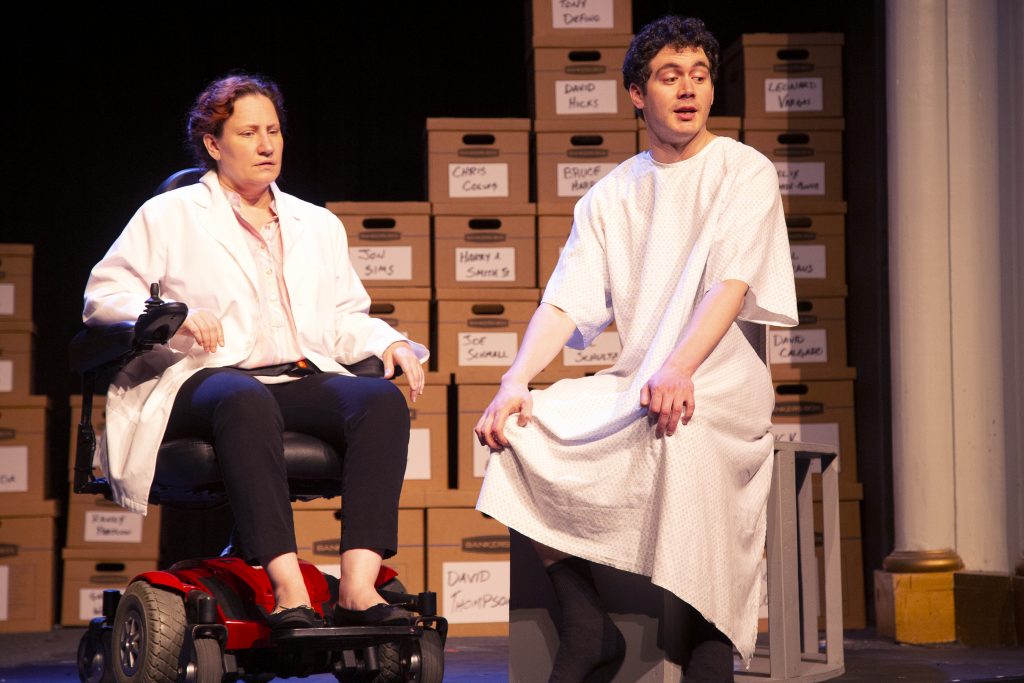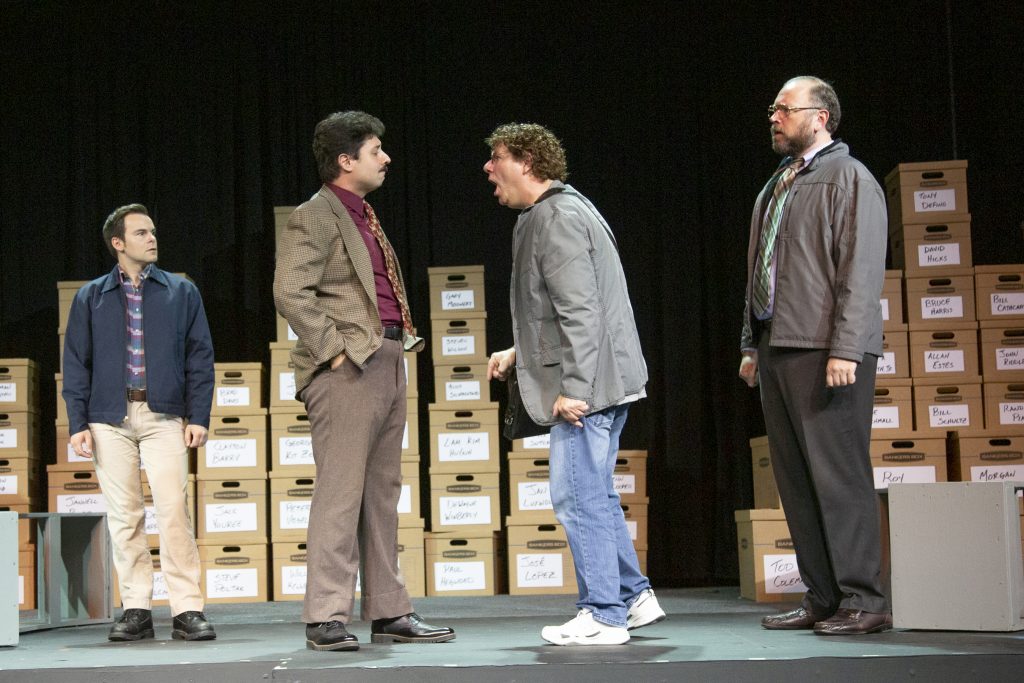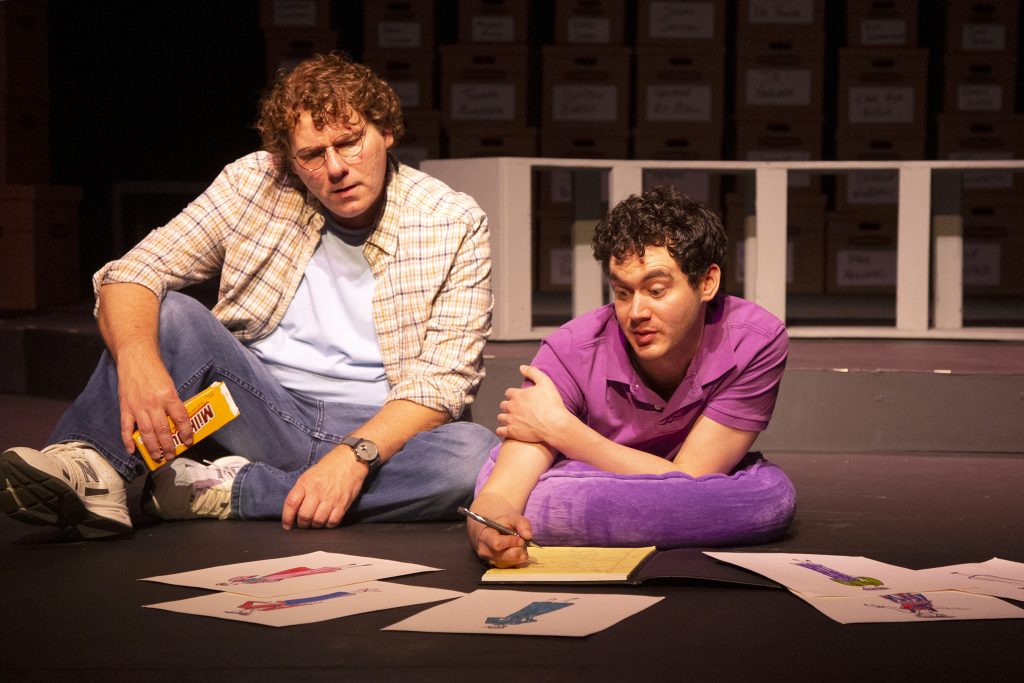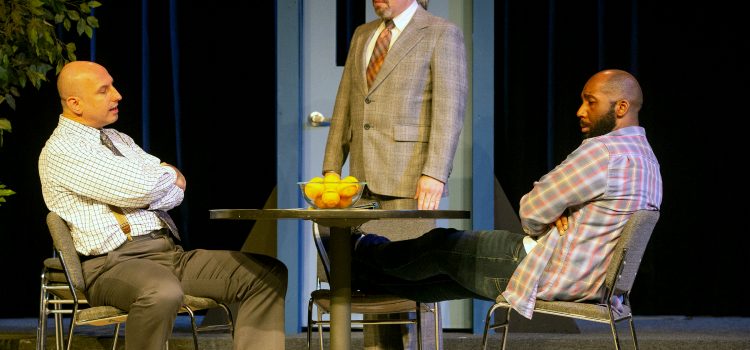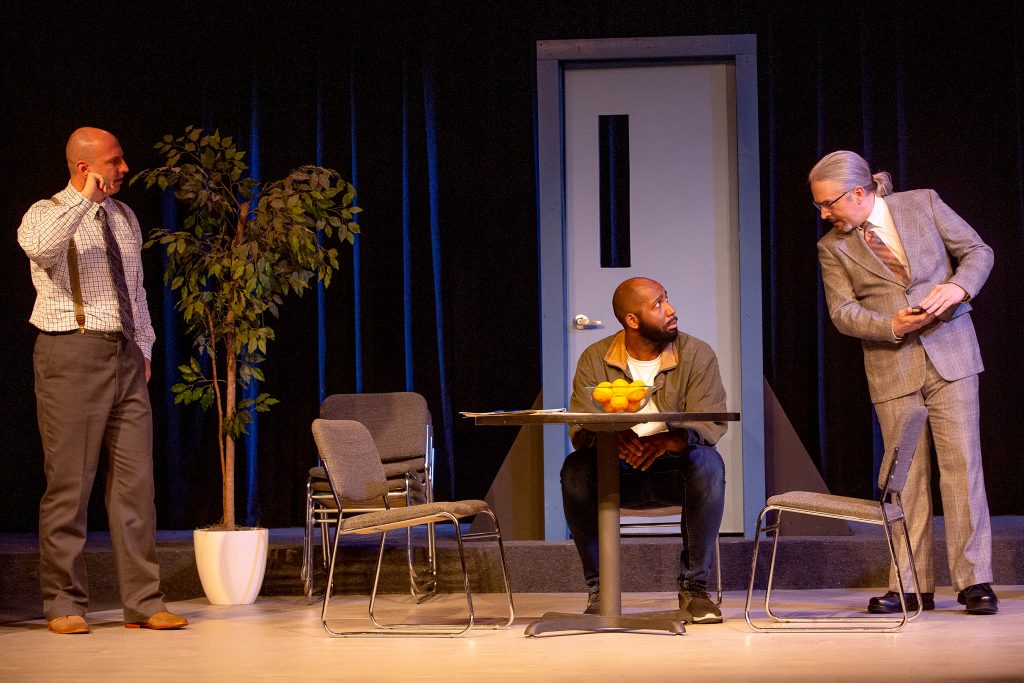By Lynn Venhaus
Winning performances enliven a slickly produced “Ripcord” that sprinkles poignant moments among well-executed broad physical humor.
In the vein of classic sitcoms like “The Golden Girls” and the evergreen Neil Simon smash hit “The Odd Couple,” Stray Dog Theatre’s latest play is relatable because of a finely tuned ensemble convincing in a clash of temperaments and wills.
This 2015 comedy from the acclaimed playwright David Lindsay-Abaire is not as emotionally gut-wrenching as his Pulitzer-Prize winning drama “Rabbit Hole,” or as piercing as his social commentary “Good People,” but its familiar beats entertain.
Last year’s Tony winner for Best Book and Score (Lyrics) of a Musical for “Kimberly Akimbo,” Lindsay-Abaire has adapted “Shrek” and “Cinderella” into hit musicals with a populist flair.
Sprightly Annie Bayer and Jan Mantovani play the two warring widows at the center of this good-natured work, keeping a brisk pace with graceful movements and snappy banter.
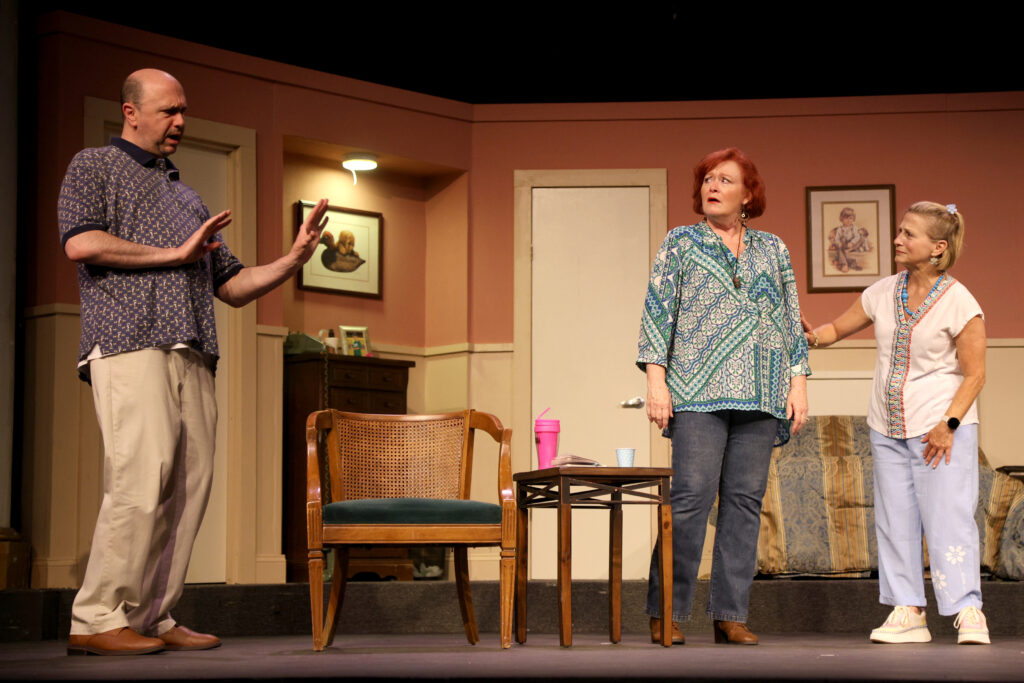
Mantovani is delightful as an endlessly chipper Marilyn whose sunniness annoys the perpetually grouchy Abby (Bayer), her new roommate at an assisted living center. They deliver zingers with aplomb as their differences and life stories emerge.
However, because Abby is such a prickly personality and unrelentingly dour, Bayer’s character comes across as more one-note, but she will have opportunities to provide some backstory context to her behavior.
It’s obvious from how it’s written that one is immediately drawn to the agreeable Marilyn and unsympathetic to the constantly complaining Abby, who doesn’t play well with others.
When Abby exhausts the conventional means to have Marilyn moved to a different room, the pair lay their cards on the table. They make a bet with each other, with the prize this plum second-floor real estate. Marilyn can have the bed closest to the window overlooking a park if Abby makes her angry, and she’ll move out if she can scare Abby.
The dirty tricks escalate – some hurtful and mean – until a winner is declared. While the sweet-and-sour duo play off against each other well, it is the addition of sharp supporting players that swiftly moves the story along.
Victor Mendez is the pleasant aide Scotty, an aspiring actor, who connects the dots to the facility’s staff and procedures. Donna Parrone is Marilyn’s loving daughter, Colleen, and Matt Anderson is her goofy but well-meaning husband Derek. They’re supportive and assist with the schemes.
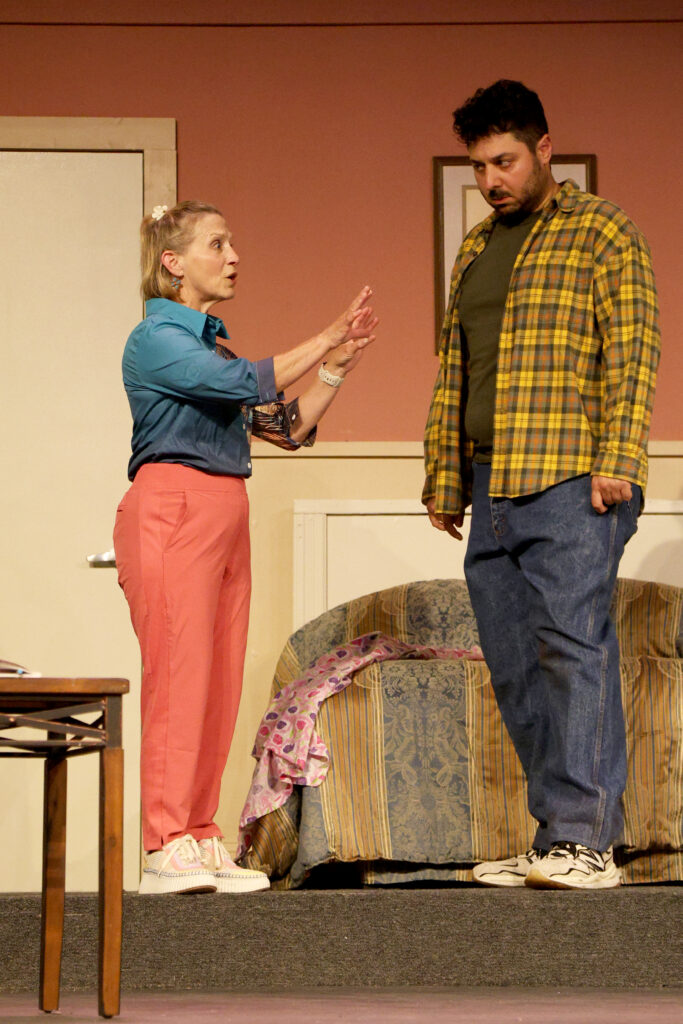
Anderson and Parrone also humorously double as part of a very theatrical trio of actors trying to frighten people at a bargain-basement haunted house. Jeremy Goldmeier joins them in this wildly overzealous troupe. He also adroitly flips the switch as Benjamin, Abby’s estranged son.
Their expert comic timing is a plus as slapstick-y shenanigans are nimbly staged.
Gary F. Bell skillfully directs in a light-hearted style, emphasizing humorous exchanges and surprising developments. The pranks look fun to pull off, and the actors keep the action fresh and the element of surprise genuine.
Rob Lippert’s set design depicts a standard double-bed room, with ubiquitous institutional décor, and has smoothly indicated scene changes involving a haunted house and skydiving experience.
Costume designer Colleen Michelson has selected appropriate casual attire for each character, and Tyler Duenow’s lighting design is effective.
Of special note is Justin Been’s sound design, which is a tad more complicated than one would think, given the play’s simple senior living setting. But he masterfully weaves in authentic sounds incorporating skydiving and a dramatic spooky scenario, not to mention a music score that compliments the story.
The cast engages and the crew’s efforts to polish this production are evident. The play may lack the substance featured in Lindsay-Abaire’s other works, but it satisfies because of an earnest team caring to make it personal.
Stray Dog Theatre presents “Ripcord” from June 6 to June 22, on Thursdays through Fridays at 8 p.m., with a special matinee at 2 p.m. on Sunday, June 16, at the Tower Grove Abbey, 2336 Tennessee Avenue, Saint Louis, MO 63104. Gated Parking.
Tickets: Adults $35 / Seniors (65+) & Students $30 (Cash/Checks/All Major Credit Cards). Additional Information and Ticket Reservations: Call (314) 865-1995 or visit www.straydogtheatre.org. Box Office/Will Call opens 1 hour prior to performance. Tower Grove Abbey is a “general seating” theatre.
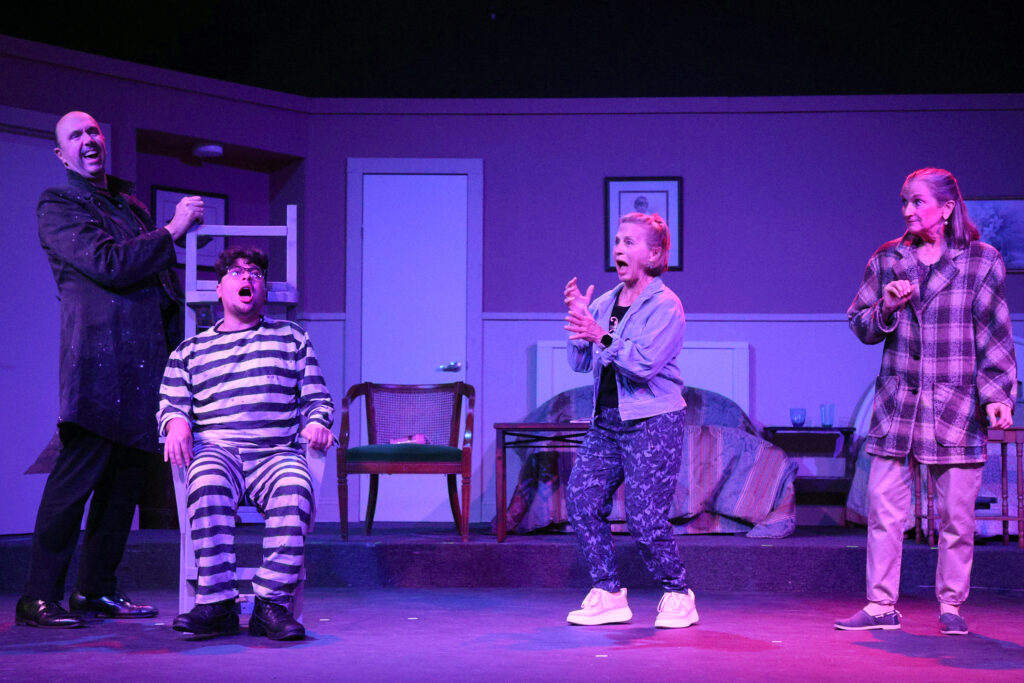

Lynn (Zipfel) Venhaus has had a continuous byline in St. Louis metro region publications since 1978. She writes features and news for Belleville News-Democrat and contributes to St. Louis magazine and other publications.
She is a Rotten Tomatoes-approved film critic, currently reviews films for Webster-Kirkwood Times and KTRS Radio, covers entertainment for PopLifeSTL.com and co-hosts podcast PopLifeSTL.com…Presents.
She is a member of Critics Choice Association, where she serves on the women’s and marketing committees; Alliance of Women Film Journalists; and on the board of the St. Louis Film Critics Association. She is a founding and board member of the St. Louis Theater Circle.
She is retired from teaching journalism/media as an adjunct college instructor.

